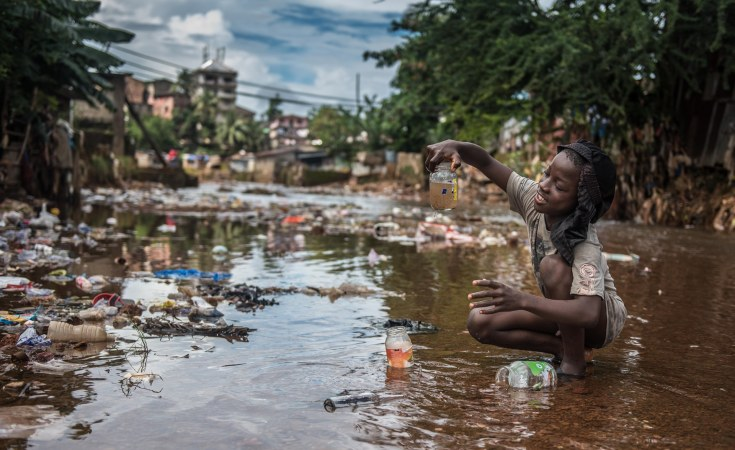Governments and international bodies have tried to eliminate the outbreaks of cholera for many years, but another wave has hit some countries in Africa. How realistic are the measures taken to stop the spread of the disease?
A few days before Christmas in 2008, 15-year-old Nigel Chigudu told UNICEF that he watched as his siblings struggled with the intense grip of cholera during an epidemic that swept through Zimbabwe. He recalled how they started vomiting and later died over lack of access to immediate medical attention.
Sixteen years later, there is not much deterrence to the cholera epidemic in many African countries, especially in Zimbabwe, Zambia, Ethiopia, Mozambique, and etcetera. The infectious disease which is caused by a bacteria that affects the intestines that leads to severe diarrhea and dehydration, and can terminate a person’s life within hours has led to a massive number of deaths and has been on a rampage since the 19th century, resulting in about 21,000 to 143,000 deaths worldwide every year.
With a cumulative of 312,338 cases, including 5,811 deaths and a case-fatality ratio of 1.9 per cent from 2021 to 2024, cholera is mostly common in Africa, as reported by the World Health Organisation.
Africa remains the region with the highest number of recorded deaths from cholera in the world largely because some environments permit the spread of the disease. Such environments are called cholera hotspots, which are usually rural areas lacking basic urban infrastructures like proper drainage systems, clean water facilities, healthcare systems and so on.
In 2019, the Zambian government pledged that by 2025, the cases and outbreaks of this disease would be eliminated. It is one year until the stipulated year, but the country still grapples with a wave of cholera outbreak that has recently killed up to 700 people. The government has so far administered oral cholera vaccines to residents and tried to prevent and manage severe cases by promoting the washing of hands and the usage of clean water.
In the same year, the Nigerian government tried to curtail the spread of the disease by providing vaccines, boreholes and handwashing facilities to promote hygiene for people in affected areas. However, the Global Alliance Against Cholera and other Waterborne Diseases (GAAC) reported that Nigeria experienced the worst cholera outbreak in 2021, with over 100,000 cases and 3,604 deaths, which surpassed the record of Covid-19 deaths in two years.
Also, International organisations like UNICEF, WHO, the International Federation of Red Cross and Red Crescent Societies have supported the government in managing the spread of this disease, but it has waxed strong, killing more people daily.
Although the focus has been on management and treatment, permanent intervention measures such as ensuring a sanitary environment for residents — like building proper drainage systems and ensuring constant clean water for cooking — and drinking have not been put in place. For instance, Caroline Mambo, a resident of Lusaka in Zambia lamented that her neighbourhood still deals with problems of blocked drainage, shortage of water, and pit latrines.
“The structural things that should have been put in place with respect to cholera, especially in our peri-urban slums, are not in place; itt is a huge problem unless they are urgently addressed,” Director General of the Zambia National Public Health Institute, Professor Roma Chilengi said.
It’s the same story in Zimbabwe, where the recent wave of cholera has spread from rural areas to Harare, the country’s capital lacking potable water.
“Harare has a perennial problem of running water. The main reservoir is not serving the whole of Harare which has expanded, and some people now are using shallow wells at their households,” said George Msumba, a Zimbabwean Journalist, during an interview with Channels. “These shallow wells are now infected, and this is where the cholera is thriving because people can go for seven days without water, so they go into the shallow wells.”
The journalist added that authorities must work towards a more permanent solution to end the disease, noting that if the government had worked on a permanent solution earlier, the recent outbreak would not have resurged.
Meanwhile, Uforo Ukpong, a Nigerian public health professional, advised state authorities to switch their approach and focus more on environmental restructuring. When put in place, Ukpong stated, environmental restructuring will minimise healthcare use and serve as a more sustainable and long-lasting means of prevention for residents, especially in the cholera hotspots.
In places like Harare where there is a limited supply of water, Ukpong suggested that residents should avoid open defecation from animals and humans on the streets or in the environment because they could contaminate open water bodies, which could be their possible only source of drinking water after the shallow wells.
Also, where people struggle to get access to clean running water, tippy taps, a hands-free device innovated for washing hands without the fear of contamination should be constructed because hand washing is a necessity to curb cholera, she added.
Ukpong told HumAngle that this innovation is low-cost, easy to set up and minimises water wastage while maintaining proper sanitation.
Also, since cholera spreads 4.5 times more in places where residents engage in open defecation, this encourages the use of the SaTo, a toilet pan that uses mechanical and water seals to close off pit latrines from open air, noting that it drastically lowers the transmission of infections or bacteria from human waste to food or water by insects.

